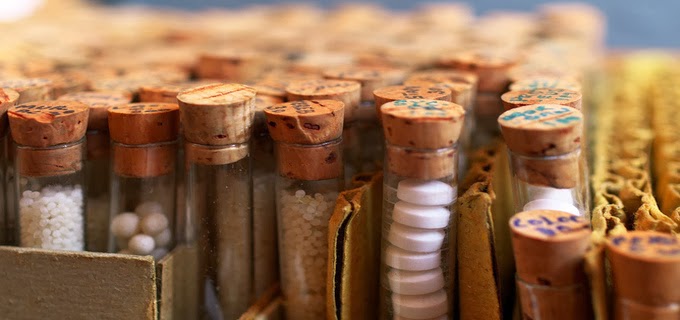The salient features of Cadmium Sulph are anguish and restlessness. In this way it resembles Arsenic, but an
Arsenic patient has one typical feature opposite to Cadmium Sulph. An Arsenic
patient cannot tolerate any irregularity in his day-to-day life. He keeps
everything in its proper order and is not afraid of hard work, while the
patient of Cadmium Sulph is lazy, like a Sulphur patient, and his things are in
great disarray. Cadmium Sulph acts on the stomach like Arsenic. There is irritation inside the stomach that
sometimes may not even let the patient sleep.
Cadmium Sulph is a good treatment for this condition.
Another
distinguishing feature is that the Arsenic patient keeps on turning sides and
cannot lie in one position for long, while the Cadmium patient feels pain on
movement. Even if he is restless, his tiredness and laziness are more
pronounced. He does not like to move at all. His expression of restlessness is
merely verbal. In Cadmium Sulph, like Zinc, there is cramping of the muscles.
The Zinc patient keeps on moving the affected part of body, placing his one
foot on the other, or keeps on shaking his legs. Unlike Zinc, the Cadmium Sulph
patient feels restlessness all over, yet does not make any movement at
all. Cadmium Sulph is useful in the diseases of the eye. It is
very useful for swollen eyelids, pain in the eye, as well as sores and ulcers
of the eye. It is also useful in the treatment of drooping eyelids (ptosis). It
is useful for invigorating the nerve fibres of the eye, in addition to working
on external eye conditions. Cadmium Sulph is mostly indicated in the treatment
of diseases affecting one side. I have mostly found it useful in the treatment
of strokes affecting the left
side of the body. The paralysis affects one eye or one side of the
body. If apoplexy leaves behind the weakness of one arm or one leg, Phosphorus
may also be beneficial.
In the Cadmium Sulph patient, numbness of the skin is well
known but it should not be overlooked that, before the actual numbness sets in
the skin has been oversensitive for some time. Over the affected parts of the
body, there is aching and a feeling of pins and needles. Some parts of the body become numb, such as
the nose or ears only. One big problem
is that swallowing becomes weak and swallowing
food becomes difficult. Many a time, swallowing becomes weak, as the
person ages, and the food may choke the air passage, which proves very
dangerous. In such patients, Cadmium Sulph is not only useful but it becomes
absolutely necessary to administer. Some children may also exhibit similar
symptoms.
Cadmium Sulph also works on the bones. When the cold in a
Cadmium Sulph patient becomes chronic, the bones of the nose start decaying.
Like Cadmium Sulph, this is also a symptom of Mercury. In Cadmium Sulph, minute spots form on the skin as in goose
skin. These can be compared to the skin
of a waterfowl, after its feathers have been plucked. In English, it is known
as goose flesh. This is also present in Capsicum.
Cadmium Sulph is very useful for the proper functioning of
the stomach. It proves very effective to treat
the failing stomach, indigestion or rotting of the food inside the
stomach, foul-smelling belches and severe nausea and vomiting. It is also
useful in the treatment of cancer
of the stomach. It does not cure but offers significant relief of
the ailment. Cadmium Sulph restores the strength of a patient whose muscles start wasting,
leading to progressive weakness.
In Cadmium Sulph, movement and sleep both aggravate the
symptoms. Resting after taking food offers relief. The patient feels hungry
constantly. The hunger remains strong even if the digestive system of the
stomach has significantly failed. Cadmium Sulph has the capability of reviving
a seriously sick patient who has strong appetite, throws up dark vomit and
whose condition is so grave as if he is about to die. In such a grave
situation, Cadmium Sulph rather than Carbo Veg will virtually revive the
patient, unless destiny so prevails.





